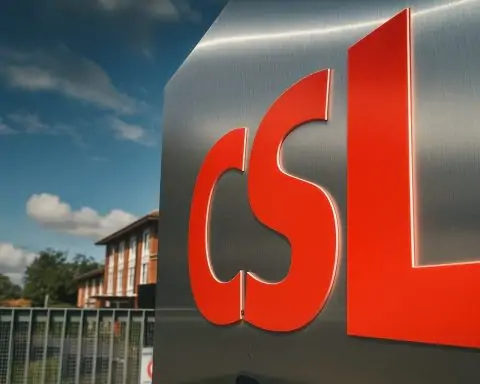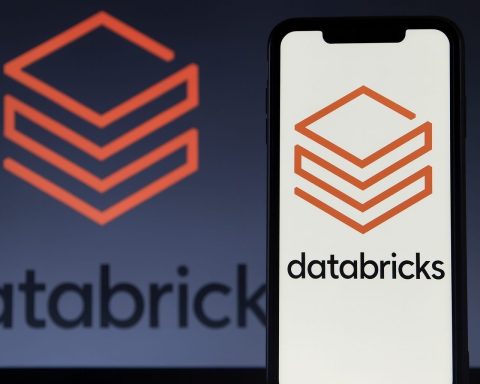- Apple’s Fall Event Confirmed: Apple set a September 9 launch event, expected to unveil new iPhones (including a rumored ultra-slim “iPhone Air”), new Apple Watches, refreshed iPad Pros, and a speedier Vision Pro headset [1] [2].
- SpaceX Starship Breakthrough: SpaceX’s Starship finally notched a successful test flight – its 10th – deploying dummy satellites and surviving a fiery reentry, a major leap forward after previous explosions [3]. NASA hailed the flight as paving the way for Starship to land astronauts on the Moon [4].
- $23 Billion Spectrum Deal:AT&T struck a $23 billion deal to buy wireless spectrum from EchoStar, boosting AT&T’s 5G capacity across 400+ markets [5] [6]. EchoStar’s stock rocketed 70% on the news, as the sale resolves regulatory scrutiny and “puts our business on a solid financial path,” its CEO said [7] [8].
- Intel’s 288-Core Chip Unveiled: At the Hot Chips conference, Intel revealed “Clearwater Forest,” a next-gen Xeon server processor packing 288 energy-efficient cores built with advanced 2nm-class (18A) process and 3D chip stacking [9]. Intel touted an 8:1 consolidation boost – one Clearwater Forest system can replace roughly 1,400 older servers [10] – aiming to vastly improve data center efficiency.
- Cybersecurity Boom Lifts Okta: Identity security firm Okta raised its sales forecast after Q2 revenue jumped 13%, citing surging demand as companies bolster defenses against ever-more sophisticated cyber threats [11] [12]. “Security and securing identity remain a budget imperative… companies are continuing to invest in securing identity as a core requirement,” Okta’s COO said [13]. Public-sector clients are fueling growth (5 of Okta’s 10 biggest recent deals came from government, including the U.S. Department of Defense) [14].
- Livestream Tragedy Spurs Scrutiny: French authorities opened an investigation into streaming platform Kick after a French user died following a days-long livestream of abuse [15]. Prosecutors are examining whether Kick “knowingly provided illegal services” by hosting violent content and if it complied with EU digital safety rules to flag life-threatening harm [16]. A new French law makes providing an illicit online platform a criminal offense (up to 10 years in jail and €1 million fine) [17]. Kick – an Australian-owned Twitch rival – said it is cooperating with regulators [18] as France considers tightening oversight of online media [19].
- Spotify Adds In-App Chat: Music streaming giant Spotify announced it will roll out a built-in messaging feature for both free and premium users, letting listeners chat and share songs with friends within the app [20]. The new chat, launching for users 16+ in select markets, revives a feature Spotify had removed in 2017 due to low engagement [21]. With Spotify’s user base now surging (696 million monthly users and aiming for 1 billion) [22] and competition from Apple/Amazon Music intensifying, the company hopes social sharing will boost engagement alongside recent price hikes [23].
- Fintech & Crypto Moves:Klarna, the Swedish “buy now, pay later” fintech, is reviving plans to go public next month. Sources say Klarna will seek a $13–14 billion valuation in a U.S. IPO – a steep comedown from the ~$50 billion price tag it eyed in 2021 [24]. The listing was paused in April when U.S. tariffs rattled markets, but IPOs have since heated up, and Klarna now aims to raise ~$1 billion amid improved market conditions [25] [26]. In crypto, Trump Media & Technology Group (former President Donald Trump’s company) teamed with exchange Crypto.com to launch a new venture that will use a SPAC merger to accumulate Crypto.com’s token (CRO) as a treasury asset [27]. The deal – inspired by Bitcoin-hoarding firm MicroStrategy’s playbook – sent the CRO token soaring ~30% to $0.20 [28]. The new entity, to be listed on Nasdaq under ticker “MCGA,” deepens Trump’s ties to crypto finance [29] [30]. Additionally, prediction-market platform Polymarket announced an investment from Donald Trump Jr.’s 1789 Capital, reportedly in the “double-digit millions.” Trump Jr. will join Polymarket as an advisor as the Trump family’s venture fund backs tech companies aligned with its “America First” agenda [31] [32].
- Tech Policy Clashes: A transatlantic rift emerged over tech regulation. U.S. President Trump blasted Europe’s new digital policies, claiming EU rules on online content and tech competition are designed to “harm” American tech firms, and even threatened fresh tariffs in response [33]. Brussels swiftly rejected the accusation: the European Commission insisted its Digital Markets Act (which reins in Big Tech gatekeepers) and Digital Services Act (which mandates content moderation and safety steps) apply fairly to all companies, not just U.S. ones [34]. An EU spokesperson noted that recent enforcement actions hit Chinese-owned platforms (AliExpress, Temu, TikTok) and that any claims of anti-US bias or censorship are “completely wrong and unfounded” [35]. Meanwhile, in Moscow, a court fined Google 7 million roubles (about $87,000) for failing to comply with Russian internet laws [36] – part of Russia’s ongoing pressure on Western tech firms to localize data and remove banned content. Google had no immediate comment on the ruling [37].
Apple Preps New iPhones and More for Sept 9 Event
Apple officially sent out invites for a September 9 event at its Cupertino headquarters, where it’s expected to unveil its latest slate of devices [38]. Topping the list will be new iPhones, potentially including a dramatically thinner model dubbed the “iPhone Air,” echoing Apple’s MacBook Air and iPad Air branding [39]. According to media reports, the company will also showcase new Apple Watch models (from entry-level to high-end), upgraded iPad Pros, and even a faster version of its Vision Pro mixed-reality headset [40] [41]. The fall launch event – held at the Steve Jobs Theater – comes as Apple faces intensifying competition in smartphones and wearables. It will be closely watched by investors and consumers alike for signs of how Apple plans to entice users with fresh hardware features. (Notably, Apple has been investing heavily in U.S. production and R&D to mitigate supply chain risks and tariff pressures [42].) The iPhone Air rumor, if true, suggests Apple may emphasize sleek design and lightness in its flagship phone, possibly alongside camera and processor upgrades. The inclusion of an updated Vision Pro headset – even before the first-gen model ships to consumers – indicates Apple’s commitment to its nascent AR/VR platform. Overall, the September 9 event is poised to be Apple’s biggest hardware announcement of the year, cementing its product lineup for the holiday season [43].
Intel Debuts 288‑Core ‘Clearwater Forest’ Data Center Chip
Intel took the wraps off one of the most powerful server processors ever at the Hot Chips 2025 conference. Dubbed Xeon “Clearwater Forest,” the chip contains an astonishing 288 cores and is built on Intel’s cutting-edge 18A process (roughly a 2 nm class node) [44]. Unlike traditional Xeons that mix high-performance cores with efficiency cores, Clearwater Forest goes all-in on energy-efficient “E-cores” to maximize thread count and throughput [45]. Intel engineers highlighted that this many-core design is ideal for cloud and hyperscale customers who run huge numbers of parallel tasks. In fact, Intel claims upgrading from 2019-era Xeon servers to Clearwater Forest can enable nearly an 8:1 consolidation – about 1,400 older dual-socket servers can be replaced by just 180 servers using the new chip [46].
To achieve this leap, Clearwater Forest employs an advanced chiplet architecture: 17 distinct chiplets are “stitched” together with a combination of Intel’s Foveros 3D stacking and EMIB 2.5D packaging technologies [47]. This allows Intel to pack more cores and cache onto the processor than a single monolithic die could hold. The 288-core beast is the successor to Intel’s 144-core Sierra Forest and will use the same platform as current 6th-gen Xeons (Granite Rapids/Sierra Forest) [48] [49]. Intel is touting not just core count but also efficiency gains: the new E-cores have architectural improvements (wider instruction decode, better branch prediction, etc.) that deliver roughly 17% higher instructions-per-cycle than the prior generation [50].
Clearwater Forest is expected to enter production soon, becoming one of Intel’s first chips on the 18A node [51]. By leveraging 3D die stacking and backside power delivery (an innovation Intel says it leads TSMC in) [52] [53], the chip achieves remarkable density and power efficiency. Industry watchers say this launch is critical for Intel’s fight in the data center market. Rival AMD and new Arm-based players have been pushing core counts higher, and cloud providers increasingly value performance-per-watt. Intel’s strategy with Clearwater Forest is to offer a “core-packed monster” that excels at massively parallel workloads while using less energy per task. If it lives up to its billing, a single Clearwater Forest CPU (or a few of them) could handle jobs that once needed racks of old servers – a potential cost and space saver for companies [54] [55]. Analysts note, however, that the chip lacks support for certain advanced instructions (it sacrifices AVX-512 capability for efficiency), so it’s targeted at specific cloud workloads. Still, Intel’s 288-core reveal underscores that the core-count wars in server silicon are reaching new heights, with Intel betting big on a many-small-cores approach to regain leadership in cloud computing performance.
AT&T’s $23 Billion Spectrum Purchase Signals 5G Ambitions
In one of the largest telecom deals of the year, AT&T agreed to purchase a trove of wireless spectrum licenses for $23 billion from satellite communications firm EchoStar [56]. The blockbuster deal will transfer valuable mid-band and low-band spectrum covering over 400 U.S. markets to AT&T, significantly boosting the carrier’s capacity for 5G and broadband services [57] [58]. EchoStar’s shares skyrocketed on the news – closing up about 70% after the announcement – while AT&T’s stock dipped slightly [59].
The sale comes amid regulatory pressure on EchoStar to put its unused spectrum to use. In May, the FCC had launched an inquiry into whether EchoStar met build-out obligations for a band of spectrum earmarked for 5G, even threatening to revoke the licenses [60]. Then in June, U.S. President Donald Trump personally urged EchoStar’s chairman and the FCC to strike a deal to avoid letting the spectrum lie fallow [61]. The result is this week’s arrangement, which effectively hands AT&T the spectrum it craves for network expansion, while allowing EchoStar to satisfy regulators and cash out. “This transaction puts our business on a solid financial path,” EchoStar CEO Hamid Akhavan said, emphasizing that the $23 billion windfall shores up the company’s finances and lets it focus on remaining assets [62]. EchoStar, known as a satellite TV provider (and Dish Network sibling), had been seeking to monetize its spectrum amid the 5G boom.
For AT&T, the deal marks another big investment to accelerate its 5G rollout. In addition to this $23 billion spend, AT&T recently bought fiber optic assets from Lumen for $5.7 billion to bolster internet offerings [63]. With the wireless market maturing, AT&T is betting that owning more spectrum – the invisible radio frequencies that carry mobile data – will give it an edge in network quality and capacity as mobile video, gaming and IoT usage keep climbing [64]. The licenses acquired from EchoStar span 50 MHz on average nationwide (mix of low- and mid-band frequencies), which AT&T can deploy for 5G services that balance coverage and speed [65]. Telecom analysts say this infusion of spectrum will help AT&T compete against Verizon and T-Mobile, which have also spent heavily on airwaves in recent years.
The deal has a strategic twist as well: AT&T and EchoStar agreed to expand their partnership by letting EchoStar (through its Boost Mobile brand) operate as a kind of “hybrid” mobile provider using AT&T’s network [66]. This essentially means AT&T will host EchoStar/Dish’s wireless customers on its towers – a win-win that brings AT&T extra wholesale revenue and gives EchoStar a path to keep offering mobile service. The transaction still needs regulatory approvals, but given the FCC’s encouragement and the fact it resolves unused spectrum, it’s expected to go through. In sum, AT&T’s spectrum splurge underscores how critical airwaves have become in the 5G era – and how eager carriers are to grab any available frequencies to stay ahead in the network race [67].
Cybersecurity Spending Surge: Okta’s Outlook Jumps
As cyber threats proliferate, companies are pouring resources into security – a trend reflected starkly in Okta’s latest results. Okta, a leading provider of identity verification and access management tools, announced it is raising its annual revenue and profit forecasts after seeing stronger-than-expected demand for its services [68]. In its fiscal Q2 (May–July), Okta’s revenue climbed 13% to $728 million, topping estimates [69] [70]. More impressively, the company’s outlook for the full year got a modest boost: it now projects $2.88–2.89 billion in revenue, up from about $2.85 billion [71], and improved profit margins. Okta’s stock jumped ~7% in after-hours trading on the news [72].
Okta’s CEO and co-founder Todd McKinnon framed the upbeat guidance around a single theme: shielding organizations from escalating cyber attacks. “Overall, security – and securing identity – remain a budget imperative for companies,” Okta COO Eric Kelleher told Reuters [73]. Even as IT departments tighten spending in other areas, cybersecurity is non-negotiable. With the rise of “threat actor activity” (from ransomware gangs to digital espionage), firms are “continuing to invest in securing identity as a core requirement for their businesses,” Kelleher explained [74]. In practice, this means strong demand for Okta’s identity products like single sign-on, multi-factor authentication, and lifecycle management, which help ensure only the right people access sensitive systems. Okta noted that hackers frequently target login credentials to breach organizations, so companies are responding by hardening identity defenses [75].
One big growth area for Okta has been the public sector. In the past quarter, 5 of Okta’s top 10 customer deals were with government agencies [76]. “Our largest deal of the quarter was a group within the Department of Defense,” Kelleher said [77], underlining how even intelligence and military departments are turning to commercial identity-cloud solutions. This uptick comes as public agencies and private enterprises alike face waves of phishing and credential-stuffing attacks. Okta and rivals like Microsoft Azure AD are benefiting from a broader “zero trust” security push, where verifying user identities continuously is central.
Okta’s results also suggest cybersecurity spending is holding up better than other tech areas in 2025. While some software firms have seen sales slow, Okta added over 900 new customers last quarter and saw particularly strong uptake of its AI-powered threat detection features (which automatically spot anomalous login behavior) [78]. The company’s improved outlook is a positive signal for the wider cybersecurity industry. It echoes trends reported by Palo Alto Networks and CrowdStrike – that despite economic uncertainty, boards are still signing off on security budgets. The reason is simple: the cost of breaches – whether via ransomware payoffs or data theft – far outweighs the cost of prevention. As one analyst put it, “CISOs aren’t getting budget cutbacks when the threats out there keep multiplying.” With high-profile hacks in the headlines, firms consider identity protection platforms like Okta’s a must-have. In Okta’s case, this translated into better-than-expected earnings and a vote of confidence that robust growth will continue [79] [80].
SpaceX Starship Finally Succeeds in Major Test Flight
SpaceX has taken a giant step forward in its high-stakes Starship program. On August 26, the company’s massive Starship rocket system completed its first fully successful test flight after a series of explosive failures [81]. Launching from SpaceX’s Starbase in Texas at 7:30 PM EDT, Starship flew higher and longer than ever before. Critically, it managed to deploy a batch of trial satellites into orbit and survive intense reentry heating – achievements that eluded previous attempts [82] [83].
During the flight, the 403-foot-tall Starship (comprised of a Super Heavy booster first stage and the Starship upper stage) reached space and, about 30 minutes in, ejected 8 dummy “Starlink” satellites using a novel “Pez dispenser” mechanism [84]. This marked the first time Starship has released payload objects in orbit – a crucial demonstration of its satellite deployment capability for SpaceX’s future missions. About an hour after launch, Starship slammed back into Earth’s atmosphere over the Indian Ocean, performing a blazing-hot reentry to stress-test its heat shield [85] [86]. SpaceX had outfitted the vehicle with improved hexagonal heat shield tiles, aiming to see if they could protect Starship from the fiery temperatures of reentry without needing major refurbishment. The test largely succeeded: Starship endured the reentry (telemetry showed many tiles stayed intact under extreme heating) and began its landing maneuver. Ultimately, the rocket performed a controlled “belly flop” splashdown in the ocean west of Australia – intentionally destroying itself, but only after gathering reams of test data [87] [88]. This “test-to-failure” approach is by design: SpaceX pushed Starship to its limits to find any weaknesses, and ending in a planned fireball was considered a successful outcome once primary objectives were met [89].
The significance of this test is hard to overstate. NASA’s acting Administrator Sean Duffy congratulated SpaceX, saying “Flight 10’s success paves the way for the Starship Human Landing System that will bring American astronauts back to the Moon on Artemis III” [90]. NASA has contracted SpaceX to provide a version of Starship as the lunar lander for its 2027 Moon mission, and progress had been slowed by Starship’s earlier test failures. This week’s milestones suggest Starship is overcoming its engineering hurdles. Elon Musk tempered the celebration with a note of caution on SpaceX’s livestream: “There are thousands of engineering challenges that remain… maybe the single biggest one is the reusable orbital heat shield” needed for Starship to fly repeatedly without extensive repairs [91]. But Musk heralded the dummy satellite deployment and reentry as proof that Starship’s core design is sound. SpaceX plans to rapidly iterate on the prototype – Musk’s team at Starbase has been churning out new Starship vehicles and upgrades in a matter of months [92].
The Starship system is central to SpaceX’s future. It’s envisioned as a fully reusable mega-rocket capable of ferrying 100+ tons to orbit – dramatically more than SpaceX’s current Falcon 9 rockets – and eventually transporting humans to Mars. This test showed the Super Heavy booster can lift Starship to space and be expendable if needed, and that Starship can handle key parts of orbital flight (deployment, reentry) without immediate catastrophic failure. Still on the to-do list: demonstrating in-space refueling between Starship vehicles, perfecting the tricky catch mechanism for the returning booster, and achieving a gentle landing of Starship itself. SpaceX is also working through regulatory steps with the FAA after earlier launches caused debris and environmental concerns. Nonetheless, Flight 10 has broken a long development rut for Starship [93]. It gives SpaceX and NASA confidence that the program is back on track. As Musk often says, “Excitement guaranteed, success not guaranteed,” but with this test Starship inched much closer to success – bringing the Moon, Mars, and beyond within its sights.
Spotify Introduces In-App Messaging to Spur Social Listening
Facing growing competition in music streaming, Spotify is adding a new twist: it wants users not just to listen, but to chat and share right inside the app. The company announced a forthcoming in-app messaging feature that will be available to both free and premium users [94]. Rolling out in select markets, the feature lets Spotify users send text and music recommendations to people they follow or have interacted with on Spotify – essentially bringing a social media element into the music platform. It will launch on mobile for users 16 and older starting this week [95].
Spotify actually had a direct messaging capability years ago (it was removed in 2017 due to low usage), but the landscape has changed dramatically since then [96]. The Swedish company’s user base has ballooned – it now boasts 696 million monthly active users globally, up 22% year-on-year, and is targeting 1 billion users in the coming years [97]. That massive audience presents an opportunity: even if a small fraction engage in messaging, it could drive more music sharing, discovery, and stickiness on the platform. Why bring back messaging now? One reason is the fierce fight for listener loyalty. Rivals Apple Music, Amazon Music, and YouTube Music have been nipping at Spotify’s heels with exclusives, high-fidelity audio options, and deep integration into their ecosystems. Spotify is looking for ways to differentiate and deepen user engagement. By building social features (like this messaging tool, plus a recently added Friends Mix playlist and TikTok-like music discovery feeds), Spotify aims to create a community feeling around music, not just a passive listening experience.
The new messaging works a bit like a built-in chat: users can start a conversation thread with friends or contacts they see on Spotify, discussing songs and artists. Spotify says it’s about “sharing the magic of music with people you care about” in a seamless way [98]. Previously, users often bounced out to WhatsApp or Instagram to send song links; now they can do it within Spotify. The messages can include track links that play previews. All users will get this for free, which is notable – Spotify isn’t paywalling the feature behind Premium, indicating it wants maximum uptake to drive network effects.
From a business perspective, Spotify has been focused on improving its profit margins after years of growth-at-all-costs. It hiked subscription prices in many markets this year (for example, the U.S. family plan jumped $1 to $16.99/month) [99]. That boosts revenue, but Spotify also needs users to stick around and not churn away after price increases. New social features are one lever to increase retention. If friends are chatting and curating music together on Spotify, they may be less likely to leave. Spotify’s push into podcasts and videos also plays into this – it’s becoming a broader audio platform where discussions around content could keep users engaged (the company even launched a feature for podcasters to host conversations on the app).
Analysts view the messaging move as part of CEO Daniel Ek’s vision of Spotify as the “Spotify machine” – an ecosystem that users don’t need to leave. “Anytime you share a song outside Spotify, they lose a bit of the engagement,” notes one industry commentator. By plugging that hole, Spotify could gather more data on music sharing trends and popular songs via word-of-mouth, which in turn can inform playlists and recommendations. There will be challenges: moderating chats (to prevent spam or abuse) and convincing users to actually use yet another messaging tool when many already exist. But given Spotify’s scale, even moderate adoption could enhance the platform’s appeal. As one music blogger put it: “Spotify is making music streaming a team sport again.” The company’s hope is clearly that social interaction will lead to more discovery – and more hours spent on Spotify instead of elsewhere [100].
French Authorities Target Kick After Live-Streamed Tragedy
A harrowing incident in France is raising tough questions about live-streaming platforms and content moderation. Paris prosecutors this week opened an inquiry into “Kick,” a relatively new video streaming platform, after the death of a French streamer during a broadcast shocked the nation [101]. The streamer, 46-year-old Raphaël Graven (known online as “Jean Pormanove”), endured days of live-streamed harassment and abuse from other users on Kick. He was found dead on August 19 in the southern French village of Contes, after what appeared to be an orchestrated campaign of on-camera bullying. An autopsy found that Graven did not die from physical trauma; the likely causes were medical or toxicological [102]. But the very fact that his torment was streamed in real-time – allegedly without adequate intervention by the platform – has spurred authorities to act.
Investigators will probe whether Kick knowingly facilitated illegal behavior by allowing the violent, extended bullying episode to be broadcast, and whether the platform failed in its obligations under EU digital services law to flag and mitigate risks to life [103]. Under the EU’s Digital Services Act (DSA), large online platforms must react swiftly to content that poses immediate harm. France also has its own new legislation: a June 2025 law that criminalizes providing an illicit online platform where serious crimes or dangers are allowed to occur. Violators (especially if acting as an organized group) face up to 10 years in prison and a €1 million fine [104]. This law could potentially be applied to Kick if authorities conclude the site enabled unlawful “endangerment of life” by hosting the abusive stream.
Kick – a Twitch-like streaming service founded in 2022 and backed by Australian gambling tycoon Edward Craven – has been positioning itself as a more creator-friendly (some say more permissive) alternative to Amazon’s Twitch. It gained popularity with some star streamers thanks to looser rules and generous revenue splits. But this incident puts a spotlight on the downsides of light moderation. French regulators at ARCOM (the audiovisual and digital communication regulator) quickly launched their own probe, and government officials said they won’t hesitate to “tighten regulations” on streaming platforms if existing rules prove inadequate [105]. It’s a clear warning shot not just to Kick but to all live content platforms: allowing extreme harassment or life-threatening stunts online can lead to legal consequences.
In response, a Kick spokesperson said the company had been informed of the investigations in France and “will cooperate with the relevant authorities” [106]. Kick stressed it has rules against illegal content and was deeply saddened by the tragedy. The platform has already banned some users involved in the incident and says it is reviewing its safety policies. However, critics note that Kick’s content guidelines are less strict than Twitch’s, and its moderation team is smaller – potentially making it slower to react to emergencies. This case may become a test for the DSA’s effectiveness. The European Commission could get involved if France believes Kick (which is available across Europe) violated the bloc’s new online safety rules. The DSA requires big platforms to have systems for rapid removal of posts that violate law and to assess “systemic risks” like harassment. If deemed a “Very Large Online Platform,” Kick could face EU fines or orders.
For now, French prosecutors are pursuing two parallel tracks: the criminal investigation into Graven’s death (to determine if any individuals directly caused it through assault or other crimes), and the separate probe into Kick’s potential liability as a platform. The latter is novel – holding a platform criminally accountable for user behavior is relatively untested legal ground. But France’s new law explicitly targets platforms that “deliberately violate” their duty to protect users. “Providing an illicit online platform” is now on the books as an offense – a sign of regulators’ impatience with tech companies that they feel have shirked responsibility.
This tragic event has already drawn comparisons to past incidents of social media abuse and even live-streamed violence (for example, the cases that prompted stricter rules on Facebook Live after crimes were streamed). Digital rights groups are watching closely: they argue that while platforms must be accountable, there’s also a need for clear guidelines so that laws like France’s aren’t abused to censor legitimate content. Kick’s case could set a precedent. If found culpable, it might have to implement major safeguards or even geo-block its service in France. At minimum, this incident underscores that the era of “anything goes” in live streaming is over – European regulators are willing to intervene, and even press criminal charges, to prevent the internet from becoming a stage for real-life horror.
Fintech & Crypto Highlights: Klarna’s IPO Comeback and Trump’s Token Play
It was a big week in fintech funding and crypto ventures, with one headline from Europe and two from the orbit of former U.S. President Trump:
- Klarna Revives U.S. IPO Plans: Swedish fintech pioneer Klarna – known for its “Buy Now, Pay Later” services – is prepping a public offering (IPO) again after pausing earlier this year. According to insiders, Klarna aims to list on the NASDAQ in September with a valuation between $13 billion and $14 billion [107]. That’s a far cry from the nearly $50 billion valuation it reportedly targeted back in 2021 during the fintech boom [108]. It’s also slightly below the $15 billion valuation from a private funding round earlier in 2025 [109]. The reset expectations reflect how market sentiment for fintech has cooled from the frothy levels of two years ago. Klarna’s business – enabling shoppers to split purchases into installments – soared during the e-commerce surge, but rising interest rates and competition have since compressed its margins. The company postponed an IPO in April amid market jitters, especially after President Trump’s surprise tariff threats roiled stock markets [110]. Now, with equity markets stabilizing over the summer and successful tech IPOs like ARM, Stripe, and Instacart reviving investor appetite, Klarna sees an opening. One source says Klarna could raise around $1 billion in the offering [111], selling roughly 5–8% of the company. Its mooted share price range (mid-$30s) would value it near what payments firm Square was worth in 2016, underscoring how much the fintech landscape has changed. Klarna’s potential IPO is being closely watched as a bellwether for late-2023 tech listings. If it succeeds, it may open the door for other European tech unicorns to tap U.S. markets. Klarna itself has been working to show a path to profitability – it recently trimmed losses and touted growth in the U.S. and UK. Still, a $13–14B market cap is dramatically lower than its one-time aspirations, illustrating the comedown of the BNPL (buy-now-pay-later) sector. Rivals like Affirm have also seen stock slides. Klarna’s move now is a play to get public while the window is open, even if that means swallowing a humbler valuation. The company and its advisors declined comment on the leak [112], but if all goes smoothly, Klarna could start trading by early October, giving 2025 one of its biggest fintech IPOs.
- Trump’s Media Group Goes Crypto via SPAC: In an unusual fusion of politics, SPACs, and cryptocurrency, Trump Media & Technology Group (TMTG) – the company behind the Truth Social platform – announced a deal with crypto exchange Crypto.com to form a new crypto-focused entity [113]. The venture, to be called “Trump Media Group CRO Strategy”, will merge with a blank-check company (a SPAC named Yorkville Acquisition Corp) and list on the NASDAQ. Its mission: accumulate and hold Crypto.com’s native token, CRO, as a treasury reserve asset – effectively betting on the token’s long-term value [114]. This mirrors the strategy of MicroStrategy (the software firm turned Bitcoin hoarder) but with Crypto.com’s coin (also known as Cronos). Following the announcement, the CRO token’s price jumped nearly 30%, hitting about $0.20 [115], as traders anticipated increased demand for the coin [116]. The deal deepens Donald Trump’s ties to the crypto world, even as he campaigns for political office. As U.S. President, Trump was publicly skeptical of crypto (famously calling Bitcoin a scam), but his corporate brand is now embracing it. TMTG’s SPAC partner, Yorkville, will infuse cash for token purchases, and the merged entity (ticker symbol proposed: MCGA, a nod to Trump’s slogan) will effectively function like a crypto holding company. Trump Media said this strategy could “diversify [our] balance sheet” and align with its audience’s interests. Notably, Trump Media’s stock (DWAC), which is in the process of its own SPAC merger for Truth Social, rose 6.6% on the news [117]. The move comes on the heels of other crypto-SPAC deals (for example, Bitcoin miner PrimeBlock’s SPAC last year). It suggests that while traditional finance remains wary of crypto volatility, some are using SPAC vehicles to make bold plays on digital assets. The success of this venture will ultimately hinge on CRO token’s performance – a coin that currently has about a $7 billion market cap, making it significant but much smaller than Bitcoin or Ethereum [118]. If CRO rises, Trump’s company benefits; if it tanks, the treasury strategy could backfire. For now, it adds a novel chapter to the Trump business saga – tying his brand to the fortunes of a cryptocurrency.
- Trump Jr. Backs Prediction Market Startup: In another Trump-adjacent tech development, Donald Trump Jr. and his new venture fund 1789 Capital made a splash by investing in Polymarket, a blockchain-based prediction market platform [119]. Polymarket allows users to bet on the outcomes of real-world events (elections, sports, crypto prices, etc.) by trading binary options contracts. It’s part of the emerging “decentralized finance” trend, though U.S. regulators have kept a close eye on prediction markets due to gambling and securities laws. Polymarket announced it secured a funding round (details undisclosed, but sources say in the “low tens of millions” of dollars) led by 1789 Capital – a VC firm co-founded by Trump Jr. that pitches itself as championing “American exceptionalism” and anti-“woke” investments [120]. Trump Jr. will also join Polymarket as a strategic advisor [121], signaling confidence in the platform’s potential and aligning it with the Trump brand of populist, tech-enabled ventures. The investment comes as prediction markets gain traction in the U.S., especially after the 2024 election cycle saw heavy activity on crypto-betting platforms. Polymarket itself had faced a CFTC fine in 2021 for offering unregistered event contracts, but has since attempted to comply with regulations by limiting certain markets. The Trump-linked funding could raise Polymarket’s profile and possibly lend it some political cover in navigating U.S. laws. It also highlights the Trump family’s expanding business interests: according to Reuters, Donald Trump’s sons have launched a series of new ventures in the past year, spanning finance, tech, media, and even crypto mining – often aligned with their father’s “America First” themes [122] [123]. 1789 Capital’s involvement in Polymarket fits that mold, as the platform emphasizes free markets and unfettered speculation (features that appeal to some libertarian and conservative tech enthusiasts). For Polymarket, having high-profile backers could help attract users in a space that’s becoming competitive with rivals like PredictIt and Kalshi (the latter recently got federal approval for certain event contracts). The deal underscores a melding of political influence and tech startup investing, suggesting that the Trumps see opportunity in building an ecosystem of apps and services that speak to their base.
Tech Policy & Regulation: EU–US Digital Rift and Russia’s Google Fine
Transatlantic tensions over tech regulation flared up as the summer drew to a close. On August 26, Donald Trump – now back in the White House – accused the EU of targeting American tech companies with unfair digital regulations [124]. In a post, Trump singled out Europe’s new laws (the Digital Markets Act and Digital Services Act) and various digital taxation schemes, claiming they’re “designed to harm or discriminate against American technology” [125]. He threatened to respond by imposing tariffs on any country with “digital taxes, legislation or regulations” that, in his view, penalize U.S. firms [126]. The bold threat – essentially putting trade penalties on Europe over tech policies – is the latest sign of Trump’s confrontational stance toward the EU. (It harks back to trade wars of his first term, but now tech is front and center.)
Brussels wasted no time in rebuffing Trump’s assertions. The European Commission issued a firm statement defending its right to regulate the digital economy “on a sovereign basis” and denying any anti-U.S. bias [127]. A Commission spokesperson emphasized that the DMA and DSA apply equally to all large companies operating in Europe, whether they’re from the U.S., China, or elsewhere [128]. To drive the point home, the spokesperson pointed out that the last three enforcement actions under the DSA were against Chinese-owned platforms – specifically, e-commerce sites AliExpress and Temu, and the social video app TikTok [129]. Additionally, the EU has ongoing DSA investigations into Meta (Facebook) and X (Twitter), showing that European rules are being applied across the board. As for censorship claims (Trump and some U.S. tech executives like Meta’s Mark Zuckerberg have hinted EU moderation rules amount to censorship), the Commission called such claims “completely wrong and unfounded” [130]. Notably, the Digital Services Act focuses on requiring platforms to assess and mitigate risks (like disinformation or harms to minors) and to remove illegal content – but it does not mandate removal of lawful speech. EU officials stress that platforms retain their own content policies, they just must enforce them diligently and be transparent [131].
This war of words comes just after the U.S. and EU had seemingly patched up some trade issues – they announced a mini-deal to limit tariffs on steel/aluminum and others to 15% [132]. Digital policy, however, remains a sticking point. European lawmakers have forged ahead with a stringent tech regulatory agenda (the DMA, DSA, a forthcoming AI Act, etc.), asserting it’s necessary to rein in Big Tech’s dominance and protect users. American officials and companies have often bristled at these moves, worrying they disproportionately impact Silicon Valley giants. Trump’s tariff saber-rattling ups the ante: it suggests a willingness to ignite a digital trade war, whereby Europe’s tech rules could be met with American import taxes on cars or other goods. Such escalation would put global companies in the crossfire and could complicate cooperation on other issues (like joint approaches to China’s tech rise). For now, the EU is standing firm. It has invited U.S. representatives to discuss any concerns but has shown no sign of watering down its laws. As the Commission put it, “The EU’s digital rules are crafted to ensure fair competition and safer online spaces – these principles are universal, not aimed at any one country” [133]. With Trump doubling down on his America-first rhetoric, the stage is set for a renewed transatlantic clash over who sets the norms for Big Tech.
Meanwhile, in Russia, authorities delivered another reminder of their own approach to controlling Big Tech. A Moscow court fined Google 7 million roubles (approximately $86,600) for allegedly failing to abide by Russian internet laws [134]. The brief announcement came via the court’s Telegram channel – a sign of the times, as Russia increasingly uses domestic platforms to communicate official news. The fine is relatively small for Google’s scale, but it’s symbolic. Over the past few years, Russia has imposed a series of penalties on Western tech firms (Google, Meta, Twitter, TikTok) for various offenses: not deleting content Moscow deems illegal (like posts about drug use, self-harm, or political protests), failing to store user data on Russian soil, or not removing references to organizations labeled “extremist.” In extreme cases, Russia has throttled or even banned services (it blocked Facebook and Instagram in 2022, for example, and has threatened YouTube). Google has largely tried to comply where it can – it removed tens of thousands of pieces of content and relocated some employees – but it has also pushed back in some areas, especially after Russia’s invasion of Ukraine led to a propaganda crackdown.
The latest fine didn’t specify Google’s exact violation, but it fits the pattern of Russia’s tighter grip on online information. Under laws introduced by President Putin’s government, search engines must remove certain results, services must take down content the Kremlin flags (often within 24 hours), and foreign tech companies are required to open local offices and keep Russian user data on local servers (the “data localization” law) [135]. Non-compliance can lead to fines escalating to 5–10% of a company’s annual Russian revenue – as happened with Google and Meta last year – or even to services being declared illegal. Google’s Russian subsidiary filed for bankruptcy in 2022 after authorities seized its bank accounts, making operations untenable. Yet Google’s consumer services (Search, YouTube, Gmail) continue to be accessible in Russia for now, likely because a full ban would be unpopular with citizens. Instead, Russia seems to prefer fining and pressuring companies to bend to its rules.
This week’s 7 million rouble penalty is modest – roughly equal to what Google earns in a few minutes – but it’s a shot across the bow reminding Google that Russian courts are watching. Google provided no comment on the fine [136]. It’s unclear if the company will even pay; previously, it has accrued unpaid fines as it navigates the legal and moral tightrope of operating in Russia amid war and censorship. The broader takeaway is that global tech firms are squeezed between conflicting regulatory regimes. They face heavy demands in the EU and U.S. for moderation and privacy, while simultaneously confronting authoritarian expectations in countries like Russia, China, and Turkey that want more censorship and control. Balancing these is increasingly impossible, leading to fragmentation – Google’s services in Russia, for instance, are a pared-down version (Google News was blocked by Moscow, and monetization on YouTube in Russia has been disabled by Google due to sanctions). The Moscow court’s action, coming the same week as Trump’s tariff threat, underscores how tech companies are subject to geopolitics on all fronts. From Brussels to Washington to Moscow, everyone wants a say in how Big Tech operates – and tech firms find themselves walking a geopolitical tightrope, with fines, fees, and regulations coming from every direction. [137] [138]
Sources: Reuters [139] [140] [141] [142] [143] [144] [145] [146] [147] [148] [149] [150] [151] [152] [153] [154] [155] [156] [157] [158] [159]
References
1. www.reuters.com, 2. www.reuters.com, 3. www.reuters.com, 4. www.reuters.com, 5. www.reuters.com, 6. www.reuters.com, 7. www.reuters.com, 8. www.reuters.com, 9. www.servethehome.com, 10. www.theregister.com, 11. www.reuters.com, 12. www.reuters.com, 13. www.reuters.com, 14. www.reuters.com, 15. www.reuters.com, 16. www.reuters.com, 17. www.reuters.com, 18. www.reuters.com, 19. www.reuters.com, 20. www.reuters.com, 21. www.reuters.com, 22. www.reuters.com, 23. www.reuters.com, 24. www.reuters.com, 25. www.reuters.com, 26. www.reuters.com, 27. www.reuters.com, 28. www.reuters.com, 29. www.reuters.com, 30. www.reuters.com, 31. www.reuters.com, 32. www.reuters.com, 33. www.reuters.com, 34. www.reuters.com, 35. www.reuters.com, 36. www.reuters.com, 37. www.reuters.com, 38. www.reuters.com, 39. www.reuters.com, 40. www.reuters.com, 41. www.reuters.com, 42. www.reuters.com, 43. www.reuters.com, 44. www.servethehome.com, 45. www.servethehome.com, 46. www.theregister.com, 47. www.theregister.com, 48. www.servethehome.com, 49. www.servethehome.com, 50. www.theregister.com, 51. www.servethehome.com, 52. www.servethehome.com, 53. www.servethehome.com, 54. www.theregister.com, 55. www.theregister.com, 56. www.reuters.com, 57. www.reuters.com, 58. www.reuters.com, 59. www.reuters.com, 60. www.reuters.com, 61. www.reuters.com, 62. www.reuters.com, 63. www.reuters.com, 64. www.reuters.com, 65. about.att.com, 66. www.reuters.com, 67. www.reuters.com, 68. www.reuters.com, 69. www.reuters.com, 70. www.reuters.com, 71. www.reuters.com, 72. www.reuters.com, 73. www.reuters.com, 74. www.reuters.com, 75. www.reuters.com, 76. www.reuters.com, 77. www.reuters.com, 78. www.reuters.com, 79. www.reuters.com, 80. www.reuters.com, 81. www.reuters.com, 82. www.reuters.com, 83. www.reuters.com, 84. www.reuters.com, 85. www.reuters.com, 86. www.reuters.com, 87. www.reuters.com, 88. www.reuters.com, 89. www.reuters.com, 90. www.reuters.com, 91. www.reuters.com, 92. www.reuters.com, 93. www.reuters.com, 94. www.reuters.com, 95. www.reuters.com, 96. www.reuters.com, 97. www.reuters.com, 98. www.reuters.com, 99. www.reuters.com, 100. www.reuters.com, 101. www.reuters.com, 102. www.reuters.com, 103. www.reuters.com, 104. www.reuters.com, 105. www.reuters.com, 106. www.reuters.com, 107. www.reuters.com, 108. www.reuters.com, 109. www.reuters.com, 110. www.reuters.com, 111. www.reuters.com, 112. www.reuters.com, 113. www.reuters.com, 114. www.reuters.com, 115. www.reuters.com, 116. www.reuters.com, 117. www.reuters.com, 118. www.reuters.com, 119. www.reuters.com, 120. www.reuters.com, 121. www.reuters.com, 122. www.reuters.com, 123. www.reuters.com, 124. www.reuters.com, 125. www.reuters.com, 126. www.reuters.com, 127. www.reuters.com, 128. www.reuters.com, 129. www.reuters.com, 130. www.reuters.com, 131. www.reuters.com, 132. www.reuters.com, 133. www.reuters.com, 134. www.reuters.com, 135. www.reuters.com, 136. www.reuters.com, 137. www.reuters.com, 138. www.reuters.com, 139. www.reuters.com, 140. www.reuters.com, 141. www.servethehome.com, 142. www.theregister.com, 143. www.reuters.com, 144. www.reuters.com, 145. www.reuters.com, 146. www.reuters.com, 147. www.reuters.com, 148. www.reuters.com, 149. www.reuters.com, 150. www.reuters.com, 151. www.reuters.com, 152. www.reuters.com, 153. www.reuters.com, 154. www.reuters.com, 155. www.reuters.com, 156. www.reuters.com, 157. www.reuters.com, 158. www.reuters.com, 159. www.reuters.com










